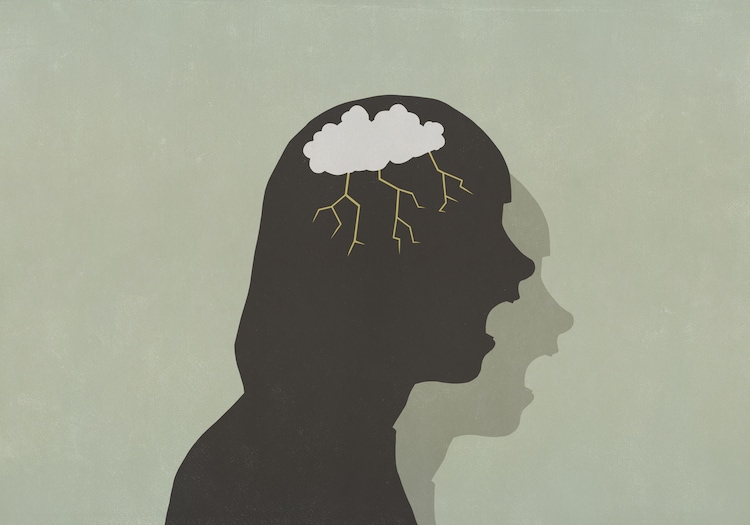Rising student suicides in India: Stigma and silence
Recent incidents of student suicide in India highlight the growing mental health crisis among youth. Despite efforts to address the problem, factors such as academic pressure, lack of support and stigma around mental health are contributing to this alarming trend.

On September 15, a student of Delhi’s Maulana Azad Medical College, who was a topper of NEET, India’s toughest exam, was tragically found dead in his room. No suicide note was recovered.
On September 26, a postgraduate student of the Indian Institute of Management-Ahmedabad was found hanging, reportedly due to stress.
On September 27, a 19-year-old woman studying second year Computer Science Engineering at Geetam University in Sangareddy district of Telangana died by suicide in her hostel room.
These are just the headlines of the last month. There are many more cases of student suicide in the country which may not have been reported. Unfortunately, such incidents are becoming common in India.
student suicide rate in india
Student suicide rates in India have increased dramatically in the last decade.
According to the National Crime Records Bureau’s 2022 report, 13,044 student suicides were recorded, marking a marginal decline of 0.3% from the previous year. However, over a period of 10 years (2013-2022), student suicides increased by 64%, with 1,03,961 suicides reported, indicating a disturbing trend.

The IC3 Institute, a volunteer-based organization that provides support to high schools around the world through guidance and training resources, highlighted that student suicides are increasing at a rate of 4% annually.
Despite the decriminalization of suicide attempts for people suffering from mental illnesses under the 2017 Mental Health Care Act, under-reporting of student suicides remains a challenge.
Regional hotspot for student suicides
Maharashtra, Tamil Nadu and Madhya Pradesh are the states with the highest number of student suicides, collectively accounting for one-third of the national total.
Rajasthan, home to the notorious Kota coaching hub, ranks tenth with 571 student suicides. Southern states and union territories have the highest regional proportion at 29%.
Mental health concerns among youth
A UNICEF report shows that one in seven youth aged 15-24 in India suffers from poor mental health, including symptoms of depression. Shockingly, only 41% of these individuals seek help to deal with mental health challenges, highlighting the stigma associated with seeking mental health support.
The increase in student suicides can be attributed to several factors, including academic pressure, competitive environment, and poor emotional regulation.

Clinical psychologist Dr Aarushi Dewan explained that previous trauma, family history of suicide and exposure to glorified media portrayals of suicide can further worsen students’ mental health.
Easy access to lethal means, chronic mental illnesses such as depression, and a lack of constructive coping mechanisms all contribute to students “feeling trapped.”
Dr. Dewan stressed the need for better emotional support systems and “destigmatizing therapy to help students deal with their challenges more effectively.”
Ganesh Kohli, founder of the IC3 Movement, which developed the report, said most suicides among high school students are caused by five major factors, including academic pressure, family pressure, body image, college admissions and financial pressure.
Anvi Kumar, a 17-year-old advocate for teen mental health and founder of MindCanvas, said, “Many students feel overwhelmed by the competitive education system along with the lack of accessible counseling and support in schools. Social media and peer pressure lead to feelings of inadequacy. Emotions are further heightened, making it necessary to address mental health as part of the educational framework.”

Educational institutions and parents play an important role in this.
Anvi Verma said, “Teachers need to create a safe and non-judgmental environment for students, where they can feel comfortable discussing their challenges.”
Ganesh Kohli highlighted the importance of teachers becoming mentors. The entrepreneur said, “Educational institutions can start creating activities that act as counseling sessions – morning assemblies, teaching classes etc. There is a need for systemic counseling to reduce this student suicide rate. To see a radical change A mass movement is the right approach.”
Experts said the stigma associated with mental health remains a significant barrier to students seeking help.
How to handle this burden?
Normalizing conversations about mental health and having teachers and parents openly address these issues can help reduce stigma and encourage students to reach out when they need support.
At home, parents and family members can take some steps to avoid “unhealthy stress” in teens, said psychiatrist Dr Sneha Sharma.
“Open communication and listening to your children and their feelings are important. Emotional support and validation, encouraging mental health discussions, building healthy coping mechanisms by adults, and seeking professional help when needed are important,” said Dr. Sharma.
As suicide rates continue to rise, it is important to prioritize mental health support and awareness to prevent further tragedies. Addressing the root causes of stress, emotional neglect, and lack of mental health resources can go a long way in curbing this dangerous trend.
The Education Ministry released a toll-free helpline number 8448440632 for the mental well-being of students under the Manodarpan initiative.






